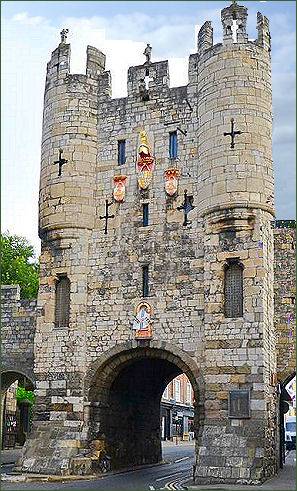Yorvik/York
A strong fortification in northern England, York was founded by the Romans in the first century after the birth of Christ. During the time of the Viking invasion York is known as Yorvik and was a central terminus for Viking ships traveling from as far afield as Constantinople, Arabia, and the western coast of Africa. Craft workshops around the town's central Coppergate area demonstrate that textile production, metalwork, carving, glasswork, and jewelry-making were all practised in Jorvik. Materials from as far afield as the Persian Gulf have also been discovered, suggesting that the town was part of an international trading network. The Danish made it a great trading hub and over the next century after Syres departs Britain, (he leaves at the end of the 10th century) it becomes a major pilgrimage site for its great York Cathedral. It is also a site for expansive trade between the Scottish kingdoms and the Danish sailors from Ireland and Scandinavia.
The fortifications were improved with a motte and bailey by William the Conquerer and his heirs until a vibrant pilgrimage and wool trade developed in the city. In 1068, two years after the Norman conquest of England, the people of York rebelled. Initially, they succeeded, but upon the arrival of William the Conqueror, the rebellion was put down. William at once built a wooden fortress on a motte. In 1069, after another rebellion, the king built another timbered castle across the River Ouse. These were destroyed in 1069 and rebuilt by William about the time of his ravaging Northumbria in what is called the "Harrying of the North" where he destroyed everything from York to Durham.
In 1190, York Castle was the site of an infamous massacre of its Jewish inhabitants, in which at least 150 Jews died. The city, through its location on the River Ouse and its proximity to the Great North Road, became a major trading center. King John granted the city's first charter in 1212, confirming trading rights in England and Europe. During the later Middle Ages, York merchants imported wine from France, cloth, wax, canvas, and oats from the Low Countries, timber and furs from the Baltic, and exported grain to Gascony and grain and wool to the Low Countries.
Syres returns to England late in his life, almost three centuries after his first encounters with druids, Viking Danes, and earth goddess priestesses. It has changed a lot since most of the wooden structures were replaced with huge stone Norman castles and forts.












Comments